Cypraea tigris Linnaeus, 1758
Tiger cowry, 59-108mm
The
shell of Cypraea tigris is typically white with dark spots, but specimens
vary from nearly pure white to nearly pure black. Living animals can be found
under rocks on lagoon interisland intertidal and shallow subtidal reefs such
as that at Ebwaj Island or along the reef between Ennubuj and South Pass. Specimens
are also sporadically common exposed on the hard reef flat above the seaward
reef dropoff. Occasional specimens are found on lagoon pinnacles. Kwajalein's
smallest specimens come from a series of quarries and the surrounding reef between
Roi and Namur Islands. Seaward reef specimens have been found eating a jet black
sponge that grows in the open on the hard reef substrate. This is the only large
cowry that is often found out in the open during the day, although then it is
usually retracted and inactive. At night the mantle extends and it wanders over
the reef grazing. It is the second longest cowry in the Marshalls, second only
to Chelycypraea testudinaria,
which the tigers typically exceed in girth. The empty shells at the bottom of
the page illustrate some of the variation in the shell coloration. The line
that runs across the top of the shell from front to back is where the two lobes
of the mantle meet when it covers the entire shell. This species has a
wide distribution throughout the Indo-Pacific. The subspecies in the Marshalls
is Cypraea tigris pardalis, which is differentiated from the primarily
Indian Ocean Cypraea tigris tigris primarily through DNA studies.
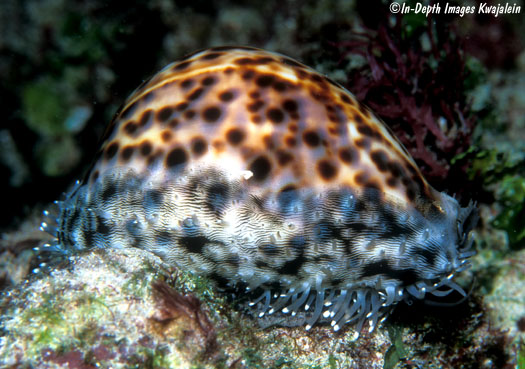
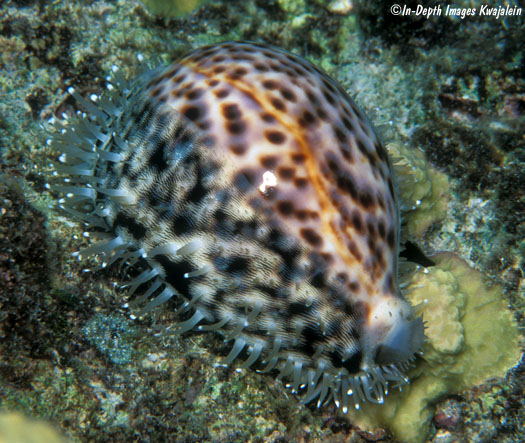
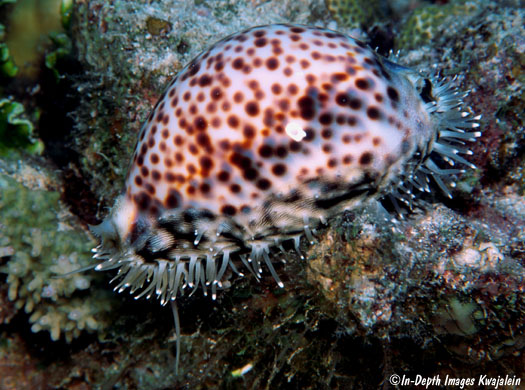
An exceptionally dark specimen
with a yellow mantle was found under the edge of the sea anemone Stichodactyla
haddoni in a Halimeda patch on a sandy lagoon slope.
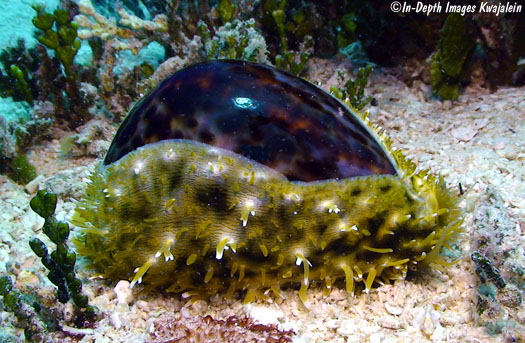
The animal below has its mantle
nearly fuly extended. Having said above that the dorsal line is where the mantle
lobes from right and left typically meet, it is apparent that in the specimen
below the right lobe (front of the photo) has extended over the dorsal line.
Obviously, they can arrange the mantle as they choose. The mantle is usually
grayish in color with small longitudinal gray and white lines, occasional darker
blotches, and spike-like gray papillae that are tipped with white.
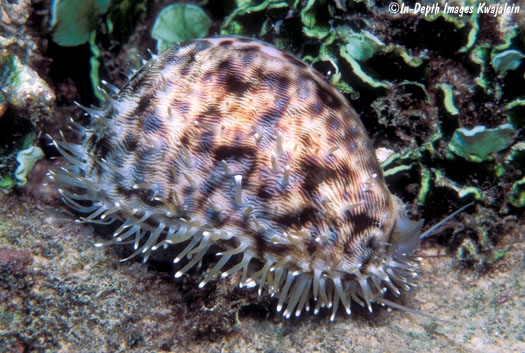
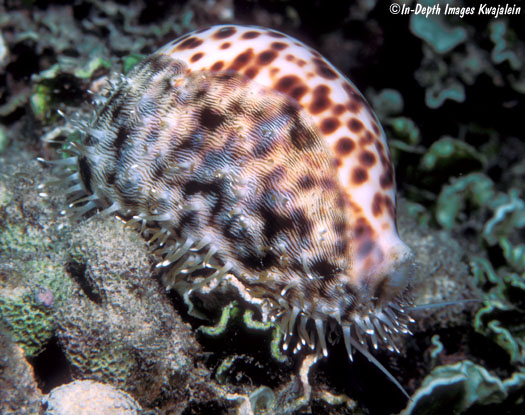
The
individual below is a juvenile in the thin bulla stage.
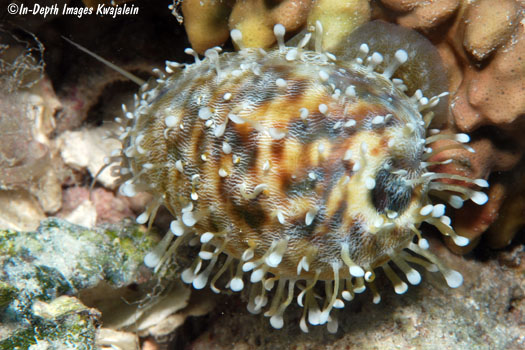
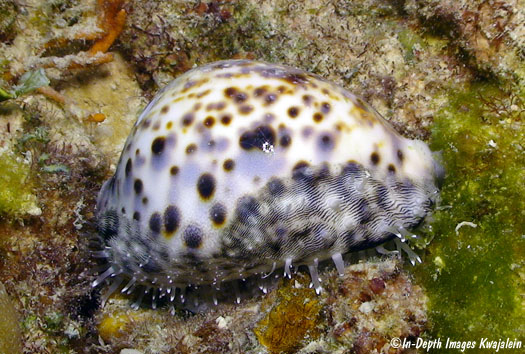
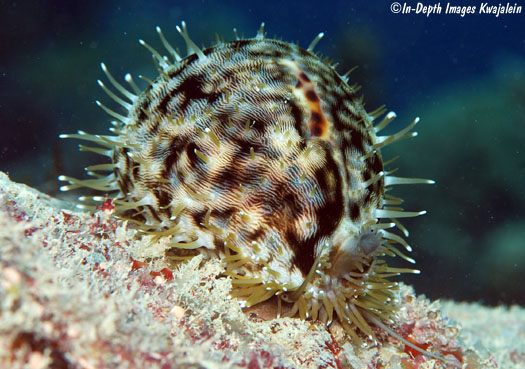
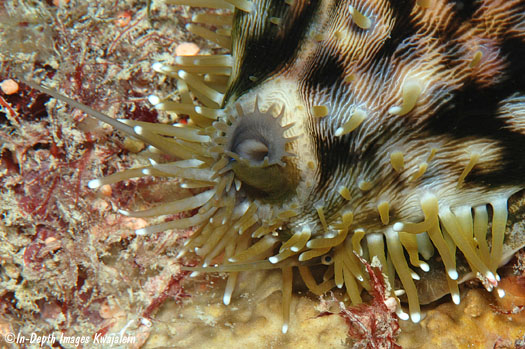
The empty shells below show some
of the variation in color. The light colored one below measures 84.1mm and was
found in 1973.
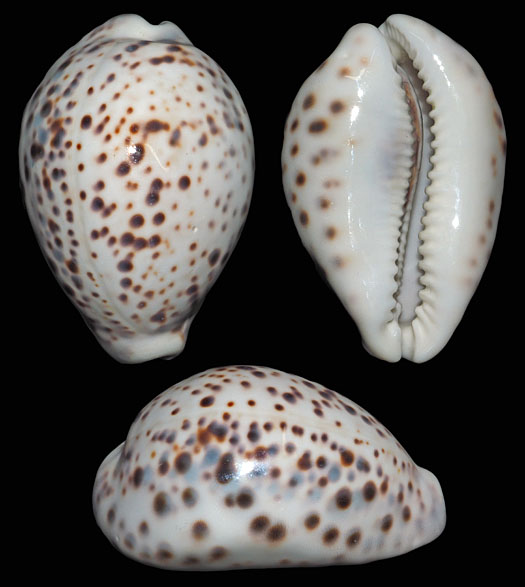
94.3mm, 1973
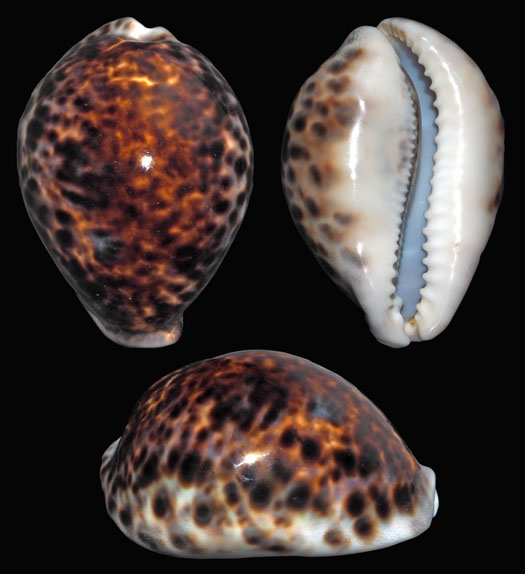
97.9mm, 1973
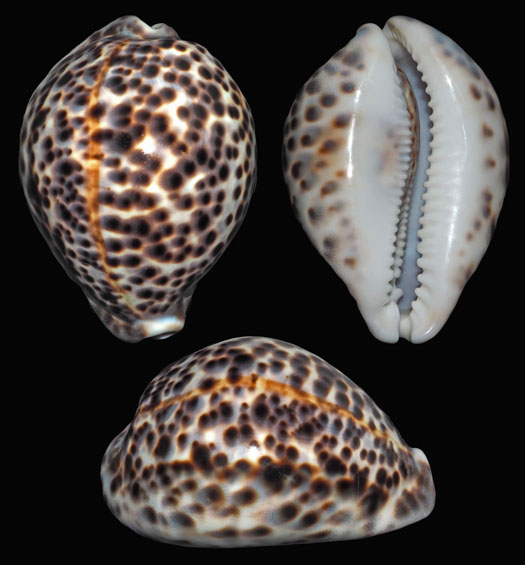
The small 59.4mm shell below was
from a reef quarry at Roi-Namur Island on 15 August 1989.
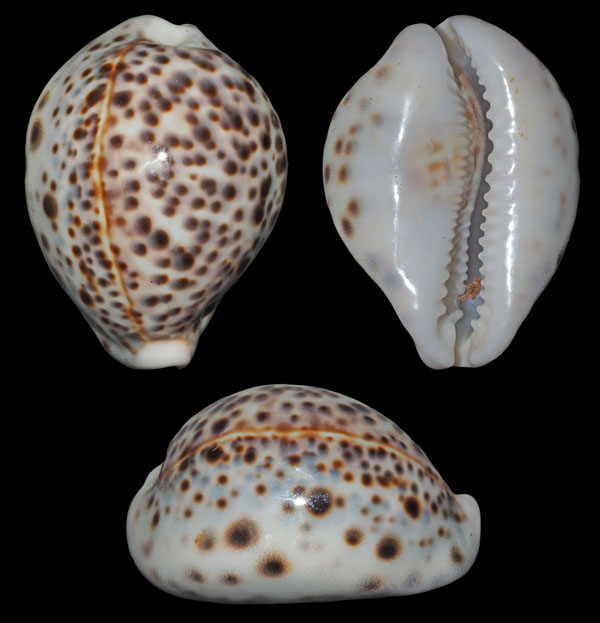
The 65.2mm shell below was found
in shallow water at Pohnpei Island.
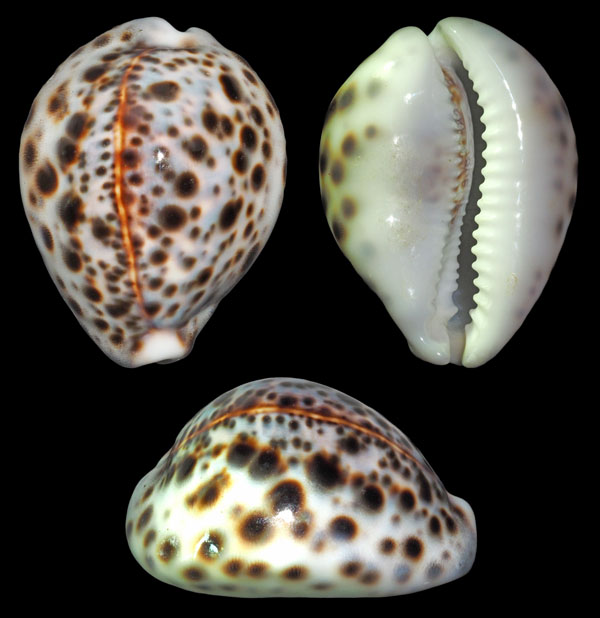
39.05mm juvenile shell found empty
at Kwajalein.
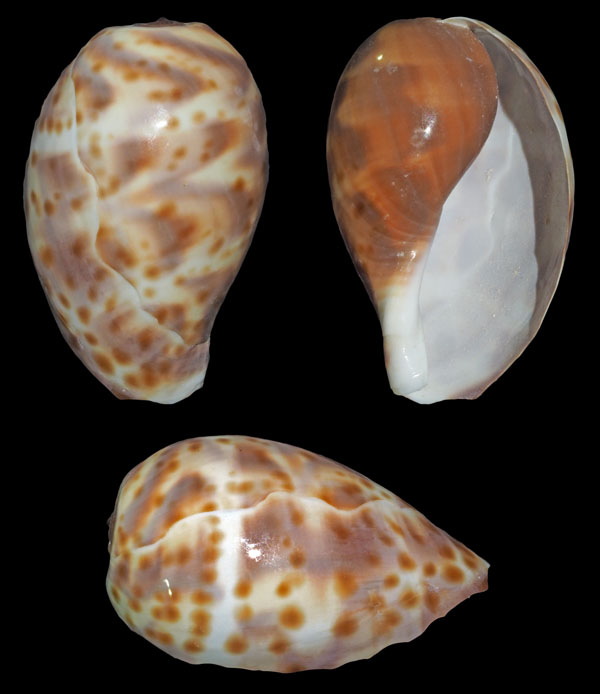
Created
1 April 2008
Updated 2 April 2024
Back to
cowry thumbnails
Kwajalein Underwater Home
















